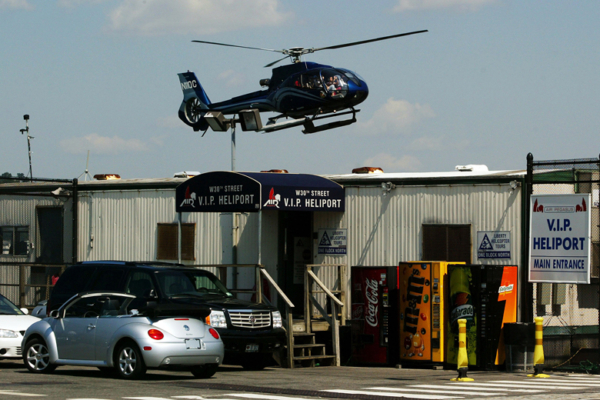New York City Council voted on April 24 to pass a legislative proposal that will restrict “non-essential use” helicopters that do not meet federal noise standards from taking off and landing at city-owned heliports starting from 2029. This measure aims to reduce noise pollution in the city and address safety and health concerns raised by recent accidents involving sightseeing helicopters. Republican Congresswoman Nicole Malliotakis expressed a similar stance on the same day.
The Proposal 26-A was introduced by City Council Majority Leader Amanda Farias, which mandates that starting from December 2029, helicopters not meeting the most stringent “Stage Three” noise standards set by the Federal Aviation Administration (FAA) cannot take off from East 34th Street Heliport and Downtown Manhattan Heliport for non-essential purposes such as sightseeing and commuting. Flights for law enforcement, medical emergencies, news reporting, military, and film shooting purposes are exempt from this restriction.
In recent years, New York City has seen a significant increase in 311 noise complaints related to helicopter noise. According to city data, such complaints have risen by over twenty times since 2018. Health studies suggest that prolonged exposure to high decibel environments may lead to conditions like high blood pressure, cognitive decline, and mental health issues.
The legislation also mandates that the New York City Economic Development Corporation (NYCEDC) provide regular reports on the percentage of flights at the aforementioned heliports that do not comply with the upcoming noise standards.
On April 10, a sightseeing helicopter crash occurred on the Hudson River, resulting in the death of a Spanish family of five tourists and their pilot. The incident is currently under federal investigation, and following the accident, this issue has gained increased attention.
The City Council also passed three accompanying resolutions on the 24th, urging the state and federal governments to further regulate helicopter operations. The recommendations include imposing noise taxes on non-essential flights, prohibiting certain helicopters from taking off and landing in specific areas, and calling for the FAA to completely ban sightseeing and charter flights over New York City.
Two of these resolutions were proposed by Council Member Gale Brewer, who stated, “Helicopter flights in New York City cater mainly to a small subset of tourists and elite travelers who use them for unregulated charter flights to the eastern airports and weekend destinations. For decades, I have advocated for the ban of all non-essential helicopter flights from city heliports. In the most densely populated urban areas in the country, non-essential helicopters are both dangerous and noisy, disrupting order and harmful to air quality.”
Opponents argue that removing this long-standing tourism activity could harm the city’s tourism and aviation industries.
During a public hearing held by the City Council on this legislation in April last year, representatives from the aviation industry expressed willingness to collaborate with affected communities by helicopter noise and commit to adopting electric technologies to make helicopter use quieter and more sustainable.
Following the helicopter crash on April 10, Mayor Adams reiterated his strong support for utilizing helicopters for tourism and commercial purposes, stating that it is a part of city life and contributes to economic activity. He emphasized that the priority is to ensure the safety of helicopters and maintain sound operations.
On the same day, April 24, Republican Congresswoman Malliotakis held a press conference calling on the Department of Transportation and the FAA to ban non-essential helicopters from flying over residential areas with a population of over five million. She stated, “Helicopters in New York not only disturb the communities of Staten Island with noise but also pose an evident threat to public safety.”

